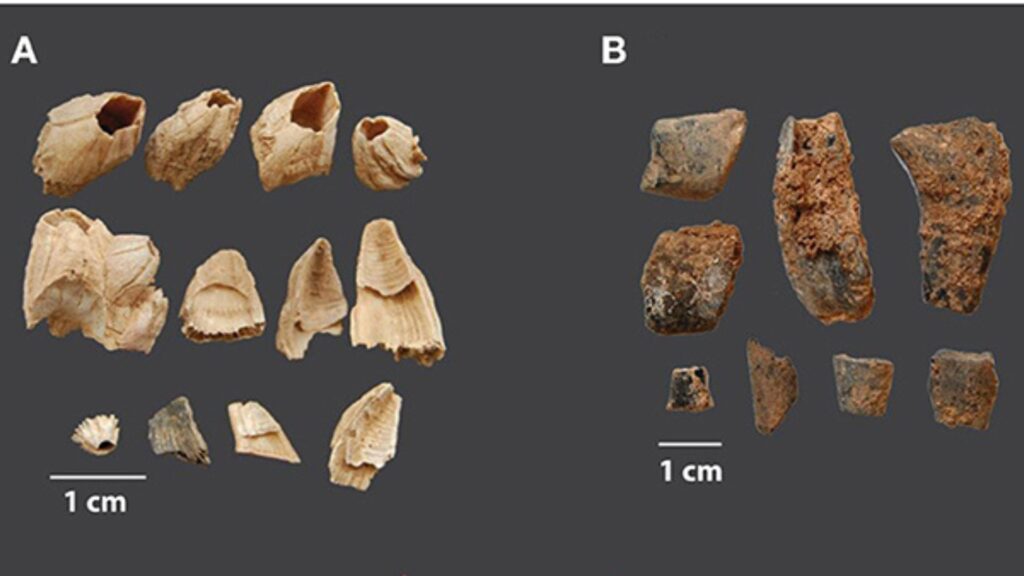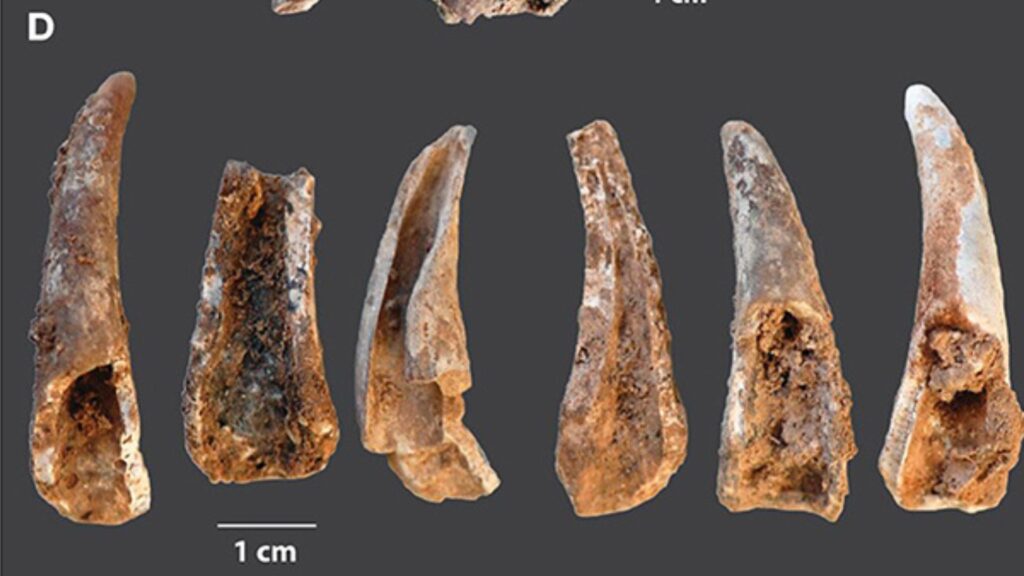Discoveries in a cave once inhabited by Neanderthals show that this now extinct human species ate crustaceans. Especially crab.
Scientific discoveries take us further and further away from the old cliché of a stupid and aggressive Neanderthal. Archaeological finds on the way of life of this human species – now extinct – suggest, for example, that it could produce primitive art and have complex speech. But it is also in food that we can find interesting archaeological elements.
A study published this Tuesday, February 8, 2022 focuses on the consumption (and cooking) of crab in Neanderthals. This deepens the discovery of remains of crabs, in a cave in Portugal which served this other human species 90,000 years ago. This is important: seafood is believed to play a role in brain growth on a species-wide scale and it has long been postulated (incorrectly) that Homo sapiens was the only human to consume it.
In this cave were several “chambers” and a common living space. She possibly housed an extended family. If, at the time, it was located one kilometer from the coast, today the sea is close, and access is difficult… which explains the good preservation of this habitat.
Neanderthals ate crabs and other crustaceans
Fossilized crab shells have been found in large numbers. It is more particularly the species cancer pagurus, still widely consumed today in Europe. But how do you know that Neanderthal prepared them? The marks on the carapace and the claws, aimed at extracting the flesh: they do not resemble the work of other predators and, except that the tools were made of stone, they echo the marks that can be observe nowadays for crabs cooked by human beings.

Similarly, archaeologists have spotted black traces of burning: the crabs seem to have been roasted with hot coals, in order to help them open and cook their flesh. Other crustaceans have also been found and also appear to have been eaten; but crabs are in the majority.
The dimensions of the remains also suggest that the crabs were selected based on their size, as all are large adult crabs – with a shell about 16 centimeters long for about 200 grams of flesh to eat.

There are still several unknowns. How were the crabs hunted? Archaeologists suggest they were trapped in nearby rock pools, shallow at low tide, and stunned with spears or stones. Second question, what was the cultural place of these crustaceans? Were they consumed for their good taste, at particular times? ” We do not know if these foods were perceived as having good taste, if they reflected some kind of celebration, if they added social value to those who harvested them, or if they had other meanings associated with consumption. write the scientists at the conclusion of their study.
This is not the first study highlighting the meals that Neanderthals could concoct. Recently, work published in November 2022 showed that this other species was able to mix different types of plants and fruits. Nuts, peas and various herbs were combined with legumes like beans and lentils, sometimes with a hint of wild mustard. And these legumes were crushed, pounded, soaked using different techniques to be opened.
Subscribe to Numerama on Google News to not miss any news!
